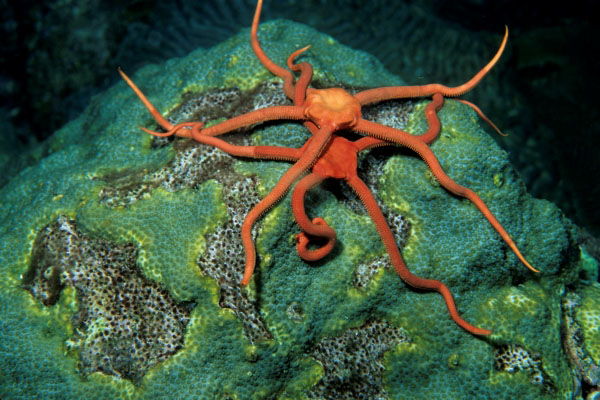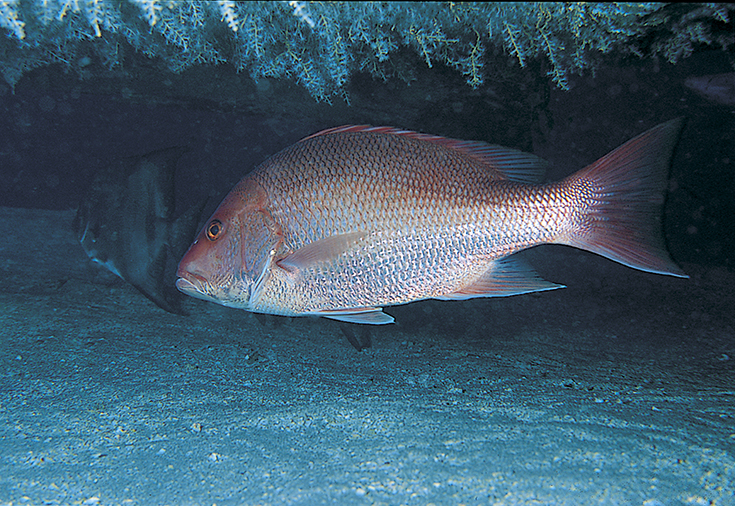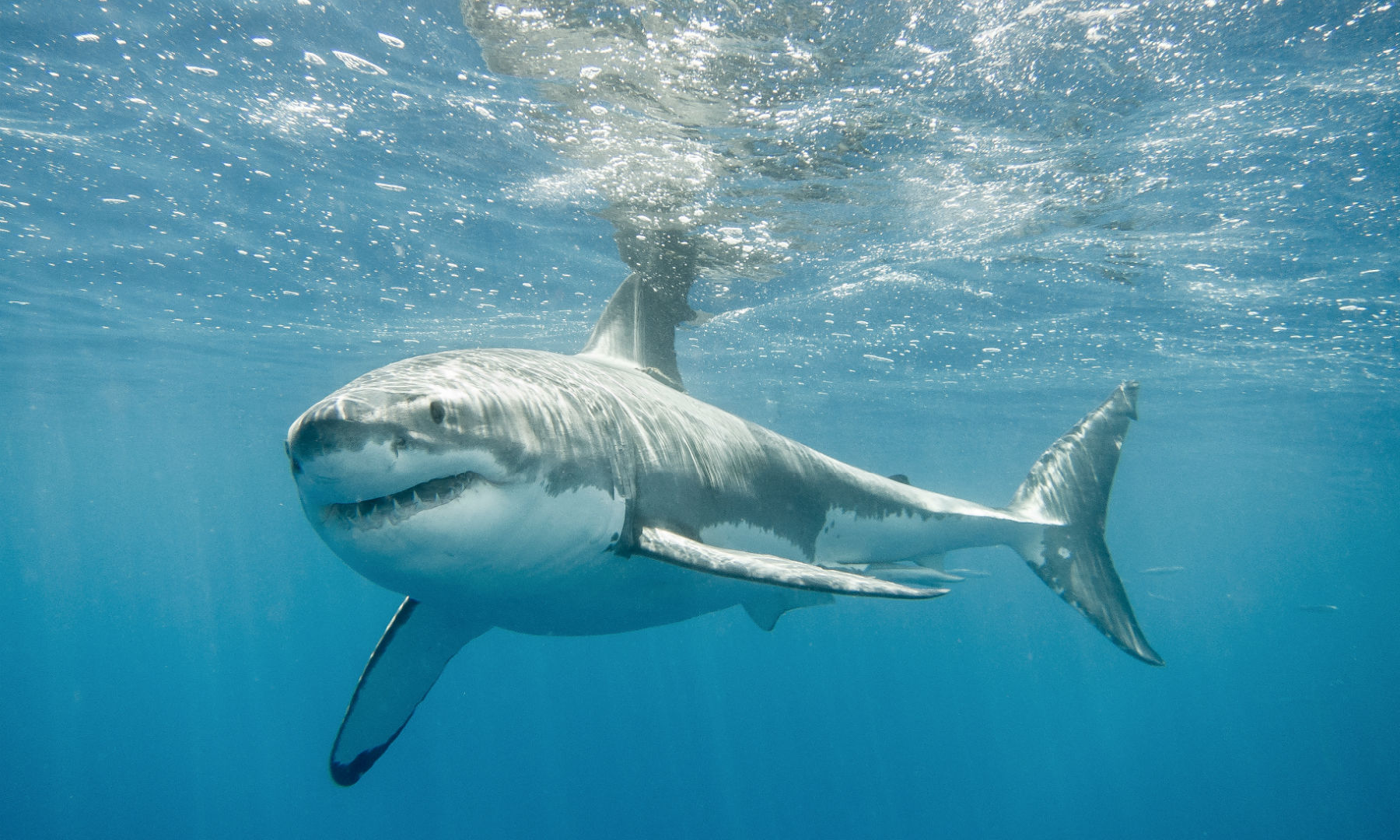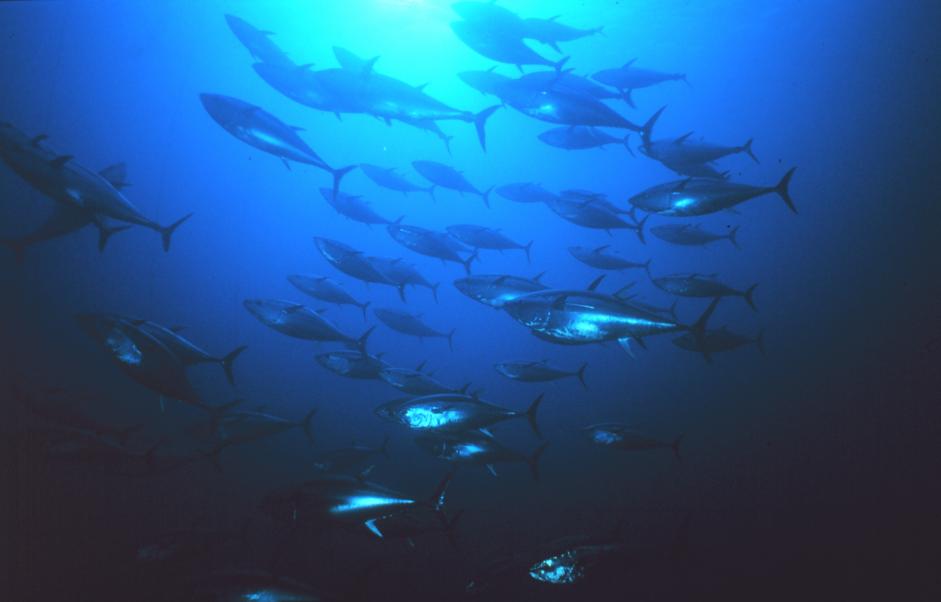An Ocean of Red, White and Blue!
Published by Ocean Conservancy
From sea to shining sea—the ocean is full of an array of diverse and beautiful animals. This Independence Day, we can’t help but see the rainbow of colors in the ocean and realize that the seas are swimming with the red, the white and the blue.
Join us as we explore the deep blue of patriotic ocean species—it’s as American as apple pie LOBSTER!
Red, White and Blue (but first, stars!)


Brittle Stars are a quirkier, more slender version of a starfish. Their mouth contains not one… not two, but five jaws! You can find brittle stars in a variety of habitats around the world. There are 73 species of them in the Arctic alone! In the Alaskan Arctic, you can find most brittle stars on shallower ocean shelf waters. Brittle stars play a pretty important role in the food web too. They are known as “seafloor ecosystem engineers,” which means they reshape the sediment shape on the seafloor, which in turn influences the distribution of other seafloor species.
Red Snapper


Red snapper are one of the most economically valuable fish in the Gulf of Mexico. Being a popular fish can have its downsides. Red snapper went through some tough times in the 1980s when their populations hit a low due to extreme overfishing. Thankfully, smart, science-based fishery management helped put red snapper on the road to recovery. Although red snapper numbers are getting better, they’re not out of the woods yet—management is still a hot topic of discussion.
Great White Sharks


Great white sharks are big—they can grow to more than 20 feet long and weigh more than 2.5 tons. This makes great white sharks the largest predatory fish in the world! Their bodies are designed for hunting: they have an excellent sense of smell and a winning set of sharp, serrated teeth that is perfect for capturing and tearing their prey apart. Great white sharks are solo swimmers, but you can find them with friends every now and again—especially if there is food around. Just like certain friends on the fourth of July, great white sharks can be uncharacteristically social with the promise of a yummy meal.
Bluefin Tuna


Bluefin tuna are built like torpedoes and race through the water at speeds up to 43 miles per hour. Because of their speed, fishermen view hooking bluefin tuna as the ultimate challenge. Although they are quite fast, fishermen often catch up to the fish, which poses a threat to their existence. Overfishing has led to plummeting population numbers. There are catch limits in place to protect the bluefin tuna population, but unfortunately, they are not always followed. If all fishermen follow the catch limits, it will help protect bluefin tuna from overfishing.
Celebrate the Ocean
As you celebrate Independence Day—don’t forget about the ocean! The ocean is at the center of who we are. Even if you’ve never seen the ocean, you’re touched by it every single day. It produces half the air you and I breathe every day, the food we eat and the water we drink.
This is what we’re fighting to protect. Because people and communities depend on the ocean every single day.
Sign up for our emails!
The post An Ocean of Red, White and Blue! appeared first on Ocean Conservancy.
Read the full article at: https://oceanconservancy.org/blog/2018/07/03/ocean-red-white-blue/



